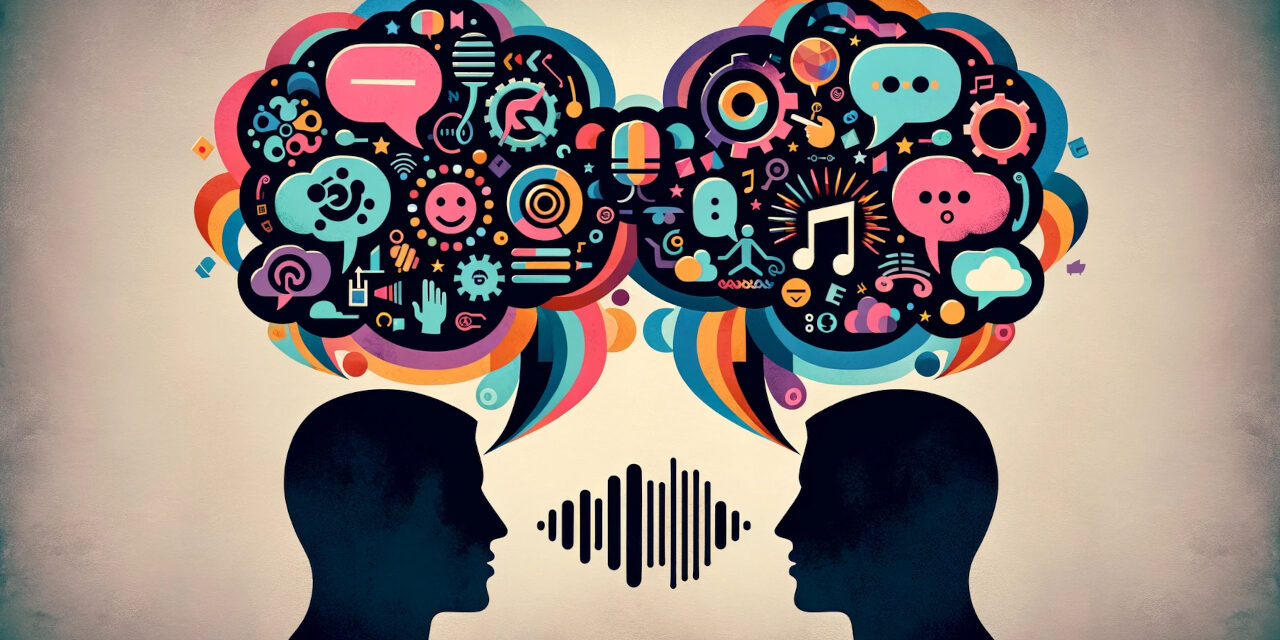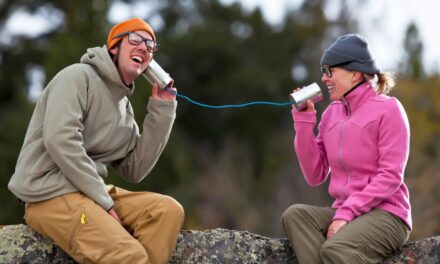Introduction
In the tapestry of human interaction, communication is the thread that weaves individuals together, forming the intricate patterns of relationships and understanding. At the heart of this lies a powerful tool known as Neuro-Linguistic Programming (NLP), a psychological approach that links neurological processes, language, and behavioral patterns learned through experience. NLP is particularly potent in enhancing the way we convey and interpret messages, both verbally and non-verbally.
For those embarking on the journey of NLP, it’s essential to recognize that communication extends far beyond the spoken word. It’s an art that encompasses the subtle dance of body language, the unspoken symphony of facial expressions, and the silent poetry of gestures. By harnessing NLP communication techniques, one can unlock a new dimension of interaction that resonates on a deeper level, whether you’re a student, teacher, professional, businessman, or even managing the daily dynamics of home life.
This blog post is crafted as a beginner’s compass to navigate the vast seas of verbal and non-verbal communication through the lens of NLP. It’s tailored to offer valuable insights and practical strategies for those new to digital marketing, particularly coaches who are looking to enhance their online presence. With a focus on real-life examples, visual aids, and actionable steps, we aim to transform the nebulous concept of NLP into a tangible toolkit that can elevate your communicative prowess. From improving verbal communication with NLP to decoding and employing non-verbal communication NLP strategies, we’ll explore how to enrich your interactions and foster connections that thrive in clarity and understanding. So, let’s embark on this transformative journey and unlock the secrets of enhancing communication using NLP.
Understanding NLP and Communication
Neuro-Linguistic Programming (NLP) is a fascinating study of the human mind and communication. At its core, NLP examines how we think (neuro), how we communicate (linguistic), and how we pattern our behaviors (programming). It’s a psychological approach that asserts that there is an intrinsic connection between neurological processes, language, and learned behaviors, and by understanding this connection, we can improve the way we communicate and interact with others.
In the realm of communication, NLP serves as a bridge between the conscious and the subconscious mind. It suggests that the words we choose and the body language we exhibit are deeply intertwined with our thoughts and feelings. This is where NLP for better communication skills comes into play. By becoming aware of and adapting our linguistic and non-linguistic expressions, we can create more meaningful and effective interactions. For instance, a coach learning about NLP might start to recognize the subtle cues that indicate a client’s comfort or discomfort, and adjust their approach accordingly.
The application of NLP in enhancing communication is vast. It ranges from the way a teacher delivers a lesson to the manner in which a doctor communicates with a patient. It’s about the synchronization of verbal and non-verbal cues to not only convey a message but also to build rapport and trust. Neuro-linguistic programming in communication is particularly powerful because it equips individuals with the ability to not just send messages, but to also influence and persuade.
For those new to NLP, it’s important to understand that it’s not about manipulation; rather, it’s about fostering genuine connections. Whether it’s through the strategic use of language to empower a student or through the conscious mirroring of body language to create empathy in a conversation, NLP provides a set of tools and techniques that can be learned and applied in virtually any situation where communication is key. As we delve deeper into the nuances of verbal and non-verbal communication, we’ll explore how NLP can be your ally in crafting interactions that are not only heard but truly felt and understood.
Foundations of Verbal Communication with NLP
Verbal communication is an art form, a delicate balance of words, tone, and pace, where the mastery of expression can lead to profound connections. NLP takes this art to a new level, offering tools and techniques to enhance the clarity and effectiveness of our spoken words. By integrating NLP communication techniques, individuals can transform their dialogue, making every conversation an opportunity to connect and influence positively.
The journey to improve verbal communication with NLP begins with active listening. It’s about tuning into the nuances of what is being said, and just as importantly, what is left unsaid. Active listening is not just about hearing words; it’s about understanding the intent and emotions behind them. NLP teaches us to listen with intent, to process the language patterns of our interlocutors, and to respond in a way that aligns with their model of the world. This creates a sense of rapport and trust, which is essential in any form of communication.
Another cornerstone of verbal communication within NLP is the Meta Model. This model is a collection of questions designed to clarify and specify information, challenging vague language, and uncovering the underlying beliefs of the speaker. By asking targeted questions, one can navigate through the surface-level chatter and delve into the deeper currents of conversation. For example, a coach might use Meta Model questions to help a client articulate their goals more clearly, moving from a statement like “I want to be successful” to a more tangible and actionable plan.
Mastering verbal cues with NLP also involves understanding the power of language patterns, such as the Milton Model, which uses artfully vague language to speak to the subconscious mind and invoke imagination. This can be particularly effective in persuasive communication, where the goal is to lead someone to a conclusion without direct instruction. A business professional might use these patterns to create a vision of success that resonates with a team, inspiring them to action.
The use of NLP verbal communication tools extends to the modulation of one’s voice to convey certainty, warmth, or urgency. The pace, tone, and volume of speech can all be adjusted to match the message and the audience. A teacher, for instance, might use a calm and steady tone to create a learning environment that is both comforting and conducive to concentration.
Incorporating NLP strategies into verbal communication is not about scripting every word but rather about becoming more mindful of how language influences perception. It’s about crafting your speech to be more engaging, persuasive, and empathetic. As we explore these NLP techniques for communication, we’ll discover how subtle shifts in our verbal exchanges can lead to significant improvements in our interactions, fostering relationships that are built on understanding and mutual respect. Whether it’s in a classroom, clinic, boardroom, or living room, the principles of NLP can empower us to speak in a way that truly resonates with our audience.
Enhancing Non-Verbal Communication through NLP
Non-verbal communication is the silent orchestra of human interaction, where gestures, facial expressions, and posture play the pivotal roles. It’s estimated that a staggering 93% of communication is non-verbal. NLP acknowledges this powerful undercurrent of interaction, offering strategies to not only interpret these silent messages but also to use them to complement verbal communication effectively.
NLP and non-verbal signals are intricately linked. The discipline teaches us that our external body language is a reflection of our internal state and that by changing one, we can influence the other. This is where non-verbal communication NLP strategies come into play. For instance, adopting a confident stance can not only convey confidence to others but also start to make you feel more confident internally. This congruence between internal state and external expression is key to authentic and impactful communication.
One of the most fascinating aspects of non-verbal communication is the concept of ‘mirroring’—subtly matching the body language of the person you are communicating with. This NLP technique fosters rapport and connection, often leading to more harmonious interactions. A coach might mirror a client’s posture or gestures to create a more relaxed and open dialogue, thereby enhancing the coaching experience.
Improving non-verbal communication with NLP also involves understanding the significance of eye patterns. NLP posits that the direction in which a person looks can indicate their thought process, whether they are recalling a memory or constructing a new thought. This insight can be invaluable in fields like therapy or negotiation, where discerning truth from fabrication or understanding a person’s thought pattern can guide the conversation to more fruitful outcomes.
Facial expressions are another realm where NLP provides insight. The micro-expressions that fleet across our faces often betray our true feelings and can be read by those trained in NLP techniques. For professionals like doctors or therapists, being attuned to these expressions can provide clues to a patient’s or client’s well-being beyond what they articulate verbally.
Moreover, the pacing and leading technique in NLP allows one to guide the flow of communication. By initially matching the breathing rate and speech patterns of your conversation partner, and then slowly changing your pace, you can lead them to a calmer or more energized state, depending on the desired outcome of the interaction.
Incorporating NLP strategies into non-verbal communication is not about manipulation; it’s about enhancing the clarity and empathy of our interactions. It’s about using our body language to not just communicate but to connect on a deeper level. As we continue to explore the rich tapestry of NLP, we’ll see how these non-verbal nuances can be the difference between a conversation that fizzles out and one that sparks a lasting connection. Whether you’re a student, a professional, or a homemaker, mastering the art of non-verbal communication through NLP can lead to more meaningful and effective interactions in every facet of life.
Practical NLP Techniques for Everyday Communication
Navigating the complexities of daily communication can be daunting, but with practical NLP techniques, you can turn everyday interactions into opportunities for positive engagement. Here are some actionable NLP strategies that can be seamlessly integrated into your routine to enhance your communicative effectiveness.
Anchoring Positive States: Anchoring is an NLP technique where you associate a physical touch with a feeling of confidence or calmness. Before an important meeting or conversation, recall a moment when you felt particularly confident. As you relive this memory, press your thumb and forefinger together. Over time, this action can help invoke confidence whenever you need it.
Reframing Perspectives: Reframing involves changing the context or interpretation of a situation to give it a more positive meaning. If a discussion becomes tense, try reframing the situation by looking for the positive intention behind the other person’s words. This can transform potential conflicts into constructive conversations.
Utilizing Sensory Language: Engage people’s senses by using descriptive language that evokes visual, auditory, or kinesthetic imagery. For example, instead of saying, “This will improve our results,” say, “Imagine the team’s excitement when we see our results skyrocket.” This technique can make your message more compelling and memorable.
Building Rapport with Matching and Mirroring: As mentioned earlier, subtly matching the body language, tone, or speaking pace of your conversation partner can create a subconscious bond. This doesn’t mean mimicking but rather harmonizing with their non-verbal cues to foster a sense of empathy and understanding.
Employing the Power of Pause: In conversations, don’t underestimate the power of a well-timed pause. Pauses can give emphasis to your points, allow your listener to process information, and help you command the conversation without saying a word.
Asking Meta Model Questions: To gain clarity in communication, use Meta Model questions to uncover the specific meaning behind vague statements. Questions like “What specifically do you mean by ‘better’?” can help drill down to the specifics and ensure both parties are on the same page.
Incorporating these NLP techniques for communication into your daily interactions can lead to more engaging, clear, and productive conversations. Whether you’re a coach adapting to the digital marketing landscape or a professional looking to sharpen your communication arsenal, these NLP tips for effective communication can be your guide to more impactful and meaningful exchanges.
NLP for Specific Audiences
Students: Enhancing Learning and Classroom Interaction
For students, the classroom is a dynamic environment where effective communication is key to success. NLP offers techniques to enhance learning by improving how students interact with their peers and educators. By employing NLP communication techniques, students can better articulate their thoughts and absorb information. For instance, using sensory-based language can help students visualize concepts, making them more tangible and easier to understand. Additionally, NLP’s rapport-building strategies, such as mirroring a teacher’s positive body language, can create a more conducive learning atmosphere. Students can also use anchoring to trigger a state of focus before exams or presentations, enhancing performance. These NLP strategies not only aid in academic achievement but also in developing valuable life skills.
Teachers: Improving Teaching Methods and Student Engagement
Teachers can utilize NLP to create a more engaging learning experience. By enhancing communication using NLP, educators can tailor their teaching style to meet the diverse needs of their students. Techniques like the Meta Model encourage students to think critically and express themselves clearly. Teachers can also use NLP to recognize and interpret students’ non-verbal cues, adjusting their approach to maintain interest and participation. Furthermore, incorporating NLP verbal communication tools, such as storytelling with sensory language, can make lessons more memorable. By applying these methods, teachers foster an environment where students are more engaged, responsive, and motivated to learn.
Professionals (Doctors, Therapists, Coaches, Counselors): Building Rapport and Trust with Clients
Professionals in fields that require a deep level of trust, such as healthcare and counseling, can benefit greatly from NLP. For these experts, non-verbal communication NLP strategies can be instrumental in creating a space where clients feel understood and at ease. By mastering verbal cues with NLP, professionals can communicate empathy and competence, encouraging clients to open up and share more freely. Techniques like pacing and leading can help professionals guide their clients through difficult conversations. Additionally, NLP for persuasive communication can be ethically used to motivate clients towards positive change and adherence to treatment plans. These NLP tools are invaluable in building strong, trusting relationships with clients.
Businessmen: Negotiating and Leading with Influence
In the business world, communication is the currency of success. NLP offers businessmen powerful tools to negotiate and lead with influence. Effective NLP communication strategies can help in understanding the needs and motivations of clients and colleagues, paving the way for successful negotiations. By using NLP techniques for communication, such as anchoring positive states during high-stakes meetings, businessmen can maintain composure and clarity. The strategic use of language patterns can also be employed to present ideas persuasively, ensuring that proposals are received with enthusiasm. Moreover, NLP’s insights into body language can assist in reading the room, an invaluable skill during negotiations and presentations.
Housewives: Managing Home and Social Interactions Effectively
Housewives manage the complex dynamics of home life, where effective communication is essential. NLP can offer practical tools to navigate these interactions smoothly. For instance, using reframing techniques can help in resolving family conflicts by shifting perspectives and fostering understanding. NLP’s mirroring techniques can be used to strengthen relationships with family members, creating harmony and rapport. Additionally, understanding non-verbal signals can aid in recognizing the unspoken needs of family members, allowing for more supportive and nurturing interactions. By applying NLP for better communication skills, housewives can enhance the quality of both their family life and social engagements.
Conclusion
In the intricate dance of human interaction, NLP stands as a powerful choreographer, guiding us to communicate with grace and impact. Throughout this exploration, we’ve uncovered how NLP can refine our verbal and non-verbal communication across various spheres of life. From the classroom to the boardroom, the principles of NLP equip us with the tools to not only speak and listen but to truly connect and resonate with those around us. As you integrate these strategies into your daily interactions, may you find your conversations enriched and your relationships strengthened, fostering a world where every voice is heard and every message matters.










